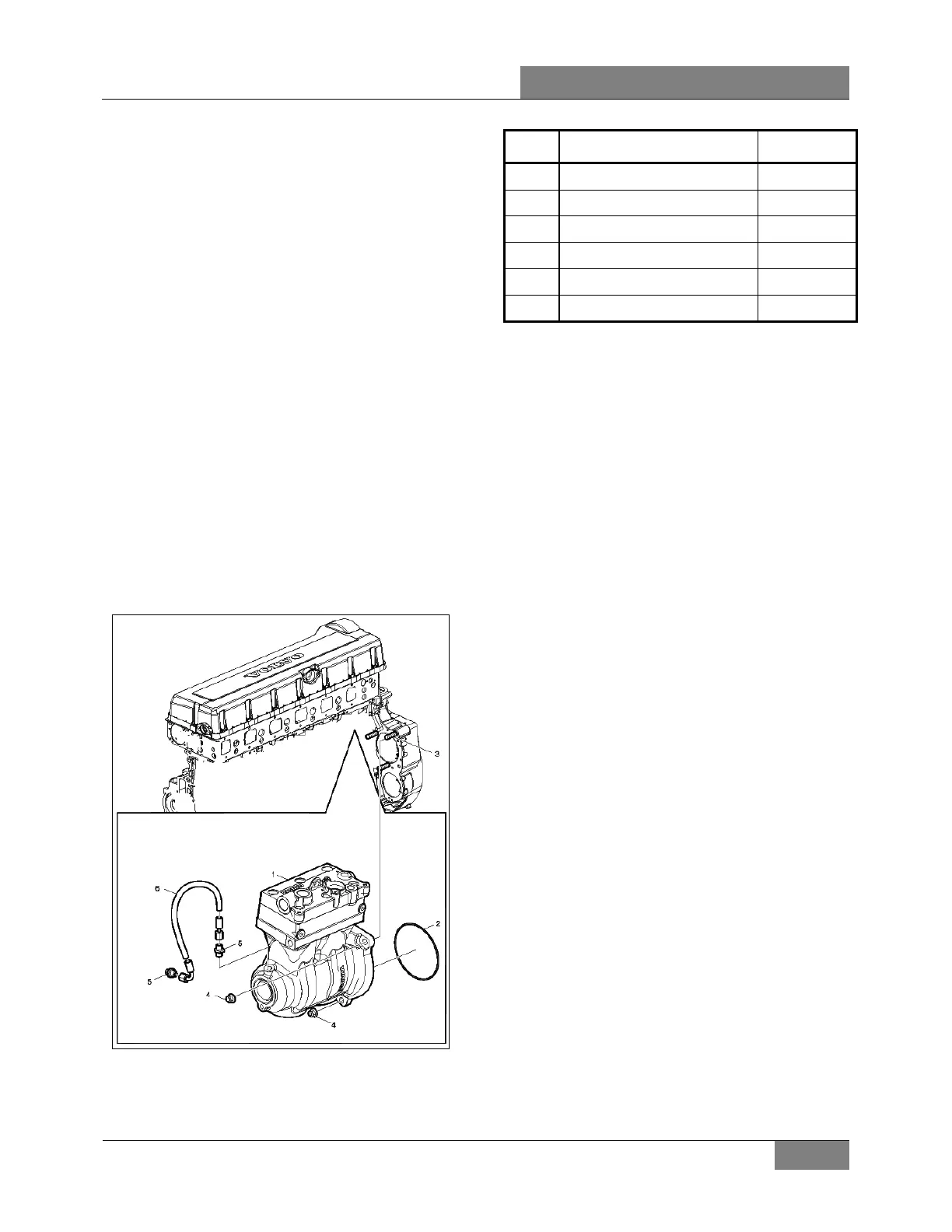SECTION 12: BRAKE AND AIR SYSTEM
PA1621 Maintenance Manual All Series | January 2017
15
engine, at the flywheel end (Figure 10). Its
function is to provide and maintain air under
pressure to operate devices in brake and air
systems.
The compressor is driven by the ring gear, and
is water cooled. Engine coolant is fed to the
compressor through a flexible hose tapped into
the block water jacket and connected to the rear
of the compressor. Coolant returns from the top
of the compressor (governor side) through a
flexible hose to the engine pump.
The air is taken from the air intake manifold and
entered in the top of the compressor. The
compressed air is pushed into the discharge line
located on side of the compressor, which sends
air to the air dryer. Lubricating oil is supplied to
the compressor by a line from the cylinder block
oil gallery connected to the air compressor.
Lubricating oil returns to the engine crankcase
through the air compressor drive assembly.
Maintenance and repair information on the
Wabco 636 Twin Cylinder air compressor is
supplied in the applicable booklet, found on your
Technical Publications USB flash drive.
FIGURE 10: AIR COMPRESSOR LOCATION
Item Description Notes
1 Air Compressor Wabco 636
2 O-ring
3 Stud (3) M12
4 Flange Nut (3)
5 Nipple (2)
6 Hose Assembly
11.1.1 Compressor Removal and Installation
1. Exhaust compressed air from air system by
opening the drain valve of each air tank.
2. Drain the engine cooling system. See
Section 5: "Cooling System".
3. Access the compressor by the engine R.H.
side compartment. Identify and disconnect
all air, coolant and oil lines from the
compressor assembly.
4. Remove the three compressor flange
mounting nuts.
5. Slide air compressor rearward to disengage
the hub from coupling. Remove the air
compressor.
6. Remove and retain the oil supply tube that
runs between the compressor and the
engine.
7. Reverse removal procedure for installation.
12. EMERGENCY / PARKING BRAKE
CONTROL VALVE (PP-1)
A push-pull control valve mounted on the L.H.
lateral console is provided for parking brake
application or release. The spring brakes are
self-actuated whenever the control valve supply
pressure drops below 60 psi (414 kPa). In the
UP position, brakes are ON. In the DOWN
position, brakes are RELEASED. On VIP
Vehicles, a protective case around the knob
prevents accidentally releasing the brakes.

